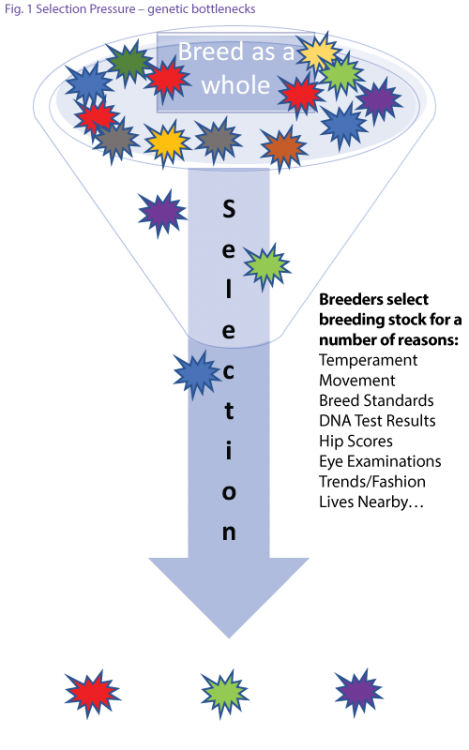NCL and Goldens
A recent article provided by the Golden Retriever Club of America, Golden Retriever Health and Genetics Highlight: Neuronal Ceroid Lipofuscinosis in Golden Retrievers, by Ann Hubbs and Ron Rubrecht,, discussed the challenges faced in Fall 2018, by a breeder who had unsuspectingly bred a litter of puppies from two carriers of neuronal ceroid lipofuscinosis (NCL 5) – a devastating neurological disease considered rare in the breed. While a DNA test existed, most Golden Retriever owners wouldn’t be aware of the condition, let alone testing options. The breeder did the absolute right thing when realizing there was a problem, by working swiftly to genetically test their dogs, contacting owners, and working with the Breed Club to make other breeders aware of the risks of NCL 5.
The situation for this breeder could arise for various conditions in many breeds. Inherited diseases that are generally rare in a breed are unlikely to be considered in selection by breeders. It could be that a genetic test isn’t available, or that it is not a priority for testing compared to more common inherited risks, or, increasingly, it might be a well-known condition in a breed in one country, but less known internationally.
This is understandable, especially considering that the risks of an inherited disease in the breed as a whole, is not necessarily reflective of the risks for the breeding population. (Fig 1.) The dogs who are left intact and used in breeding, particularly by Show/Field breeders, is only a tiny percentage of the dogs making up the whole breed. It is easy to imagine how a few popular dogs who happen to be genetic carriers [See 'carrier' defined in glossary for AR inheritance] for a rare disease like NCL 5, could shift the risks of inheritance within a few generations without anyone realizing that there is a problem at all.
For NCL 5 in the Golden Retrievers, fortunately, there is a genetic test available that can identify those dogs who are clear, carrier, or genetically affected for the condition. This will be especially valuable for those specific breeding lines within which the disease has occurred or is suspected. However, it is important to put into perspective how concerning NCL 5 is for the breed, relative to other important factors, in order to be sure that breeding decisions are made sensibly across all the considerations when making breeding plans.
Currently, within a US population tested by Embark, only <1% of the dogs tested are carriers of the NCL 5 mutation. This is known as carrier frequency. At this level of carrier frequency, breeders can develop breeding plans that include clear and carrier tested dogs, to efficiently breed away from the mutation risk, without causing a genetic bottleneck or producing genetically affected puppies. It is important for a disease like NCL, which is still likely to be clinically rare in the breed, to breed away steadily to balance any other inherited risks, as well as allowing selection for positive characteristics. Avoiding a knee-jerk reaction will help to ensure that future generations have a greater variety of breeding lines to choose from.
 IPFD is continuing to develop plans for the Health Strategies Database for Dogs that aims to catalog all conditions that are being addressed by those designing breed-specific health programs around the world, especially kennel and breed clubs. See “Get a GRIHP on Breed Health” - Breed Health Strategies Presentation given by Brenda Bonnett at the 4th International Dog Health Workshop.
IPFD is continuing to develop plans for the Health Strategies Database for Dogs that aims to catalog all conditions that are being addressed by those designing breed-specific health programs around the world, especially kennel and breed clubs. See “Get a GRIHP on Breed Health” - Breed Health Strategies Presentation given by Brenda Bonnett at the 4th International Dog Health Workshop.
What’s a GRIHP?
Globally Relevant Integrated Health Profile... https://dogwellnet.com/files/file/422-4th-idhw-breed-specific-health-strategies-dogwellnet-resources-brenda-bonnett/
HGTD has a number of resources to help breeders and owners make informed decisions on genetic testing. You can search for genetic test providers, breed-specific diseases, and more information on tests/diseases HERE.
Recently, HGTD has launched relevancy ratings for many of the tests that the participating genetic test providers are offering. Using data and information from researchers, test providers, kennel and breed clubs, and veterinary scientists, relevancy ratings are a way of indicating all of the currently known research material on a specific test for a specific breed.
 Donate
Donate

0 Comments
Recommended Comments
There are no comments to display.